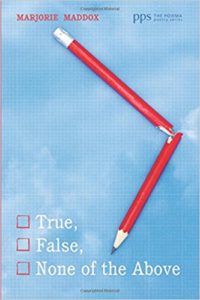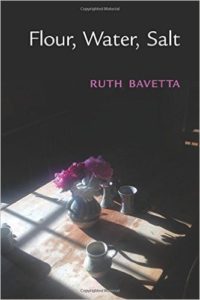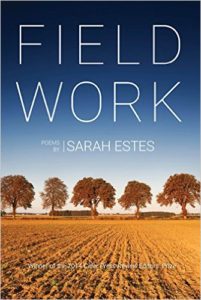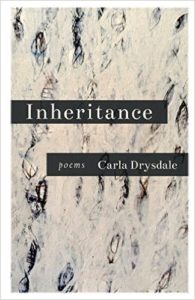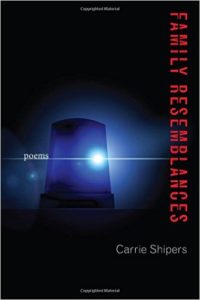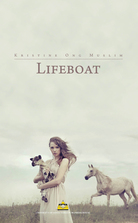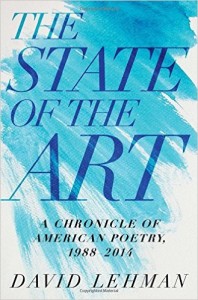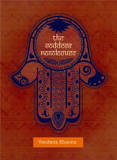 Vandana Khanna. The Goddess Monologues. Diode Editions, 2016. 28 pgs. $12.00
Vandana Khanna. The Goddess Monologues. Diode Editions, 2016. 28 pgs. $12.00
Reviewed by Lynn Domina
Vandana Khanna’s The Goddess Monologues exemplifies what are in my opinion the best qualities of a chapbook. Featuring 22 related poems, it is thematically focused on several Hindu goddesses, the stories that circulate around them in Hindu mythology, and responses of contemporary believers to them. Through its content, the collection is able to exploit the limits of the chapbook and seems best served through this form of publication.
Many of the poems adopt a regular appearance on the page, with couplets and tercets being Khanna’s favorite stanzaic forms. The lines themselves are tightly composed, reinforcing the stanzas’ crisp appearance. “Why Sita Is Chosen,” for instance, consists of five couplets, the first two consisting of single sentences, their second lines firmly end-stopped. The next three stanzas also consist of three total sentences, though here none of the stanzas duplicates the sentence, and the only line that concludes with a period is the final one. Through these choices (along with others—the frequency of caesuras, her use of monosyllabic or polysyllabic vocabulary), Khanna demonstrates how rhythmically variable such a traditional form can be.
Each line is tightly written, and the language concrete—yet the imagery reveals a Sita who retains her mystery. The poem opens with details that connote setting: “Amongst peacocks and jacaranda / she is humble, calls everything leaf, bird, sky.” Is referring to a peacock as merely a bird a characteristic of humility? Or is a goddess simply unimpressed with a peacock’s pomp and strut? The remainder of the poem relies on equally concrete language, particularly nouns. Here are the final three couplets:
She is always in the wrong season, wakes
to a mouth full of pine needles, winter grass,
imagines the cold hush of stars, spiked and luminescent,
as halo, as proof. She is wary of fire, backing away
from stove, candle, match. In mirrors, she sees only
a mouth yielding, practices bending to the wind.
The character Khanna conveys through these details is compelling. Readers watch her, puzzled perhaps, but also curious. The language and structure of the poem arouse the kind of interest that inspires us to read it again, and again, until its lines promise to linger in our memories.
Another poem, “Parvati Laments Her Reincarnation,” relies on similar imagery and rhythmic strategies. Many American readers, for whom reincarnation is a romantic idea, will be surprised at Parvati’s opening statement:
My body a revision of bones and skin,
face a dim-lit moon looking for its place
in the sky. How many times must we
rewind, start the story over?
Parvati’s question suggests that reincarnation isn’t actually “revision” so much as repetition. Her tone is frustrated as she anticipates replicating her earlier narrative. The poem is successful, though, not only because Khanna can so effectively inhabit Parvati’s voice but also because she is adept with craft—metaphor, imagery, lineation. Notice how these elements work together in the second half of the poem:
…Each time we meet
something gets subtracted: the peculiar
beat of my blood, the brown husks
of my eyes. Read my palm, tell me where
to stand. Lie and say you hear the river
rushing through me, vein by vein.
At the stanza break, Khanna exploits the options of the line break to defer the metaphor’s power. The previous image, “beat of my blood,” isn’t particularly unusual, but it becomes more resonant when the final image and metaphor recall it, “hear the river / rushing through me, vein by vein.”
Sita is a popular character in the Hindu epic, Ramayana. As is true with many characters in religious mythologies, many different stories are told of her, not all of them consistent with each other. Parvati is Shiva’s consort and the mother of Ganesha, one of the most endearing Hindu deities. Some potential readers might wonder whether they are adequately informed to understand these poems. My advice is to plunge right in. Although readers steeped in Hinduism will catch allusions others won’t, the poems are strong—they will more likely encourage readers to learn more about these goddesses than exclude readers who are unfamiliar with their stories.
I am looking forward to reading more of Khanna’s work, and I am also looking forward to reading more books published by Diode Editions. When I purchased The Goddess Monologues, I also picked up a couple other chapbooks. Diode has done a remarkable job with production—the cover stock and paper are high quality, and the design flourishes are thoughtful and appropriate to this collection. As a material object, the book does justice to its contents.

